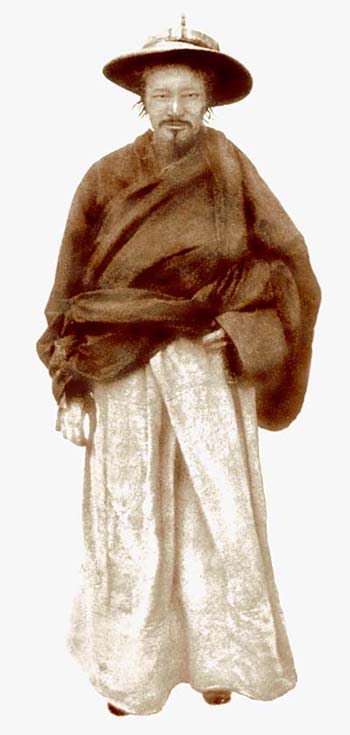
Ngak’phang gÇodpa
A charnel ground, Southern Tibet, in the 1930s
This ngakpa was photographed during ‘air-burial’ rites. It was common for gÇodpas and gÇodmas to perform ‘air-burial’ rites in places where there where no ragyapa (disposers of the dead). Air-burial consisted of dismembering the corpse in order that it could be easily eaten by vultures, who would then ‘carry the body into the sky’. This was seen as a final act of generosity. Such burials were often the source of skull bowls and thighbone trumpets used in Vajrayana rites. Even the highest Lamas would perform this service if they were travelling as practitioners of gÇod.
According to Ralzhig Pema Legden:
Kyabjé Chhi’mèd Rig’dzin Rinpoche recounts a story of having lived in a charnel ground for a period of time. He was engaged in the work of making a bowl from the top of a skull he had found, when he happened to notice that the teeth were still in very good condition. Kyabjé Chhi’mèd Rig’dzin Rinpoche said that he had had a missing tooth for some time and that the skull had provided a replacement which lasted him for years. He simply washed the tooth clean and wedged it into the gap as a form of dental bridge.
Ngak’chang Rinpoche commented on this story:
This ‘matter-of-fact’ approach to life – as the continuum of birth and death in every moment, is characteristic of Tantric realisation. There is nothing morbid or macabre in these processes if one has relinquished one’s neurotic fear of death. gÇodpa and gÇodmas practice in order to sever the root of attachment to form as a definition of being. For this reason they acquaint themselves with death and the circumstances of death.
